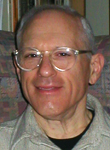Book honors work of linguist Alan Nussbaum
By Kathy Hovis

Thirty international scholars have joined forces to create a book honoring the career of Alan J. Nussbaum, Cornell professor of classics and linguistics. “Multi Nominis Grammaticus” (2013, Beech Stave Press) was published on the occasion of Nussbaum’s 65th birthday.
“Alan is universally recognized as the preeminent expert on the derivational morphology of Proto-Indo-European [language] and has opened up many new, groundbreaking paths of research in reconstructing the protolanguage,” said Draga Zec, chair of Cornell’s Department of Linguistics.
Co-edited by Michael Weiss, Cornell professor of linguistics; Adam I. Cooper of Northeastern University; and Jeremy Rau of Harvard University, the volume includes chapters by Weiss; Cornell classics professor Hayden Pelliccia; Aaron Tate, Ph.D. ’10; Todd Clary, Ph.D. ’09; and Jeremy Rau, Ph.D. ’03. Topics range from Nussbaum’s favorite subject of Indo-European language structure to ancient languages such as Tocharian and the study of historical language from the time of Aristophanes.
Nussbaum received his Ph.D. from Harvard in 1976. His research focuses on the “proto-language” or early “parent” language to the Indo-European languages, a family that includes English and most European languages, as well as Persian and Hindi. He is the author of “Head and Horn in Indo-European” (1986) and “Two Studies in Greek and Homeric Linguistics” (1998) as well as numerous articles.
“Historical linguistics has both a scientific aspect and a cultural-historical aspect,” said Weiss, whose work also focuses on Indo-European linguistics. Reconstructing a language involves piecing together evidence from the surviving daughter languages and looking for patterns and changes that are common throughout all language development, he said. But linguists also need to have an understanding of the time period when the language was spoken – what was going on in that culture and in the world.
“Alan's work has transformed our understanding of how nouns and adjectives are derived from each other in the older Indo-European languages,” said Jay Jasanoff, Diebold Professor of Indo-European Linguistics and Philology at Harvard and a contributor to the book. “His work has been hugely influential in Europe and the U.S., not only through his publications, but also through his luminous presentations at conferences. The detailed handouts from his conference presentations are kept, treasured and privately circulated like samizdat literature in the old Soviet Union.”
Kathy Hovis is a writer for the College of Arts and Sciences.
Media Contact
Get Cornell news delivered right to your inbox.
Subscribe